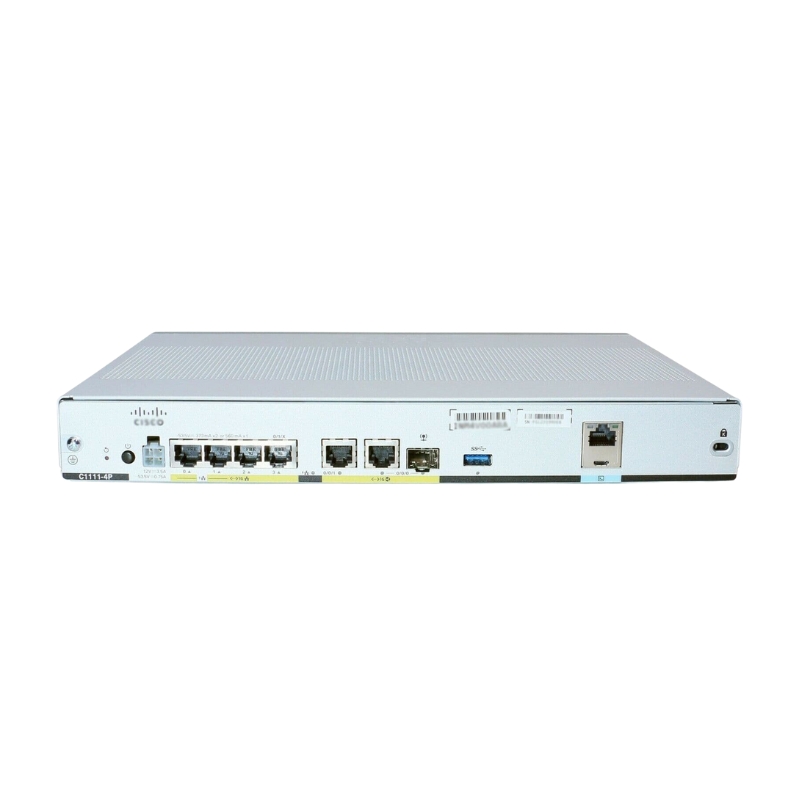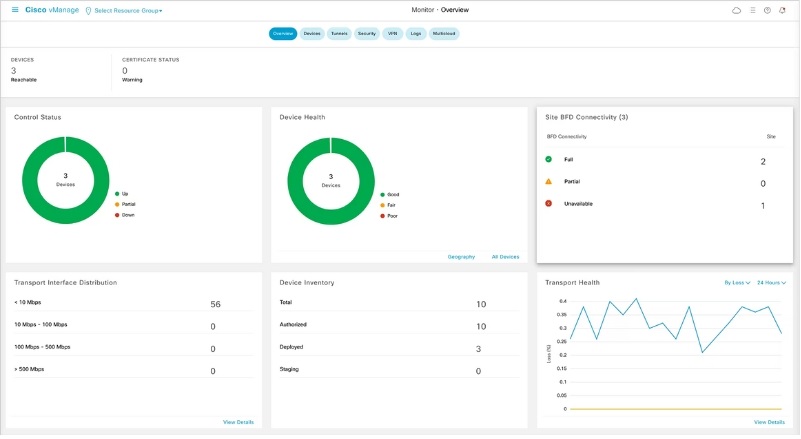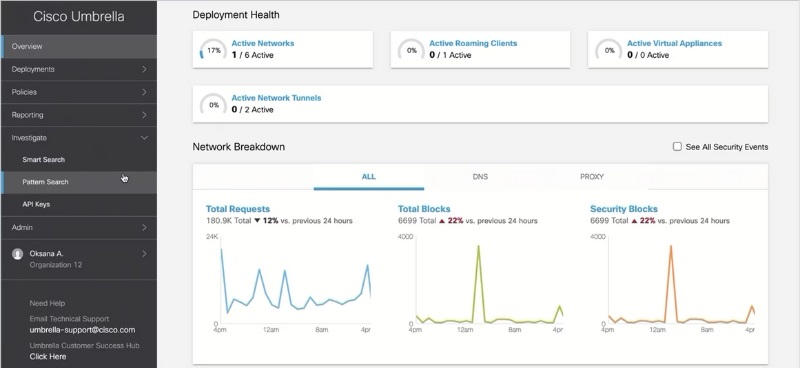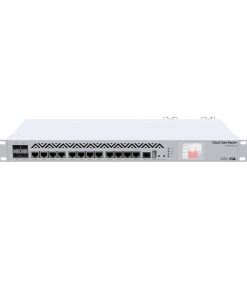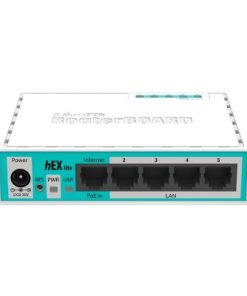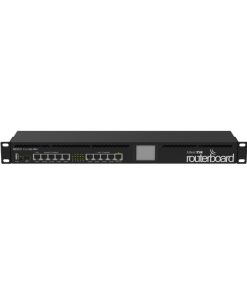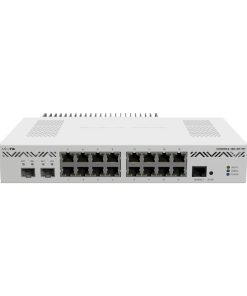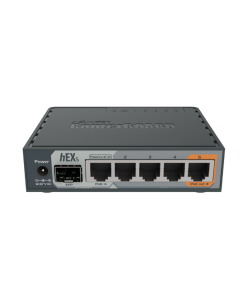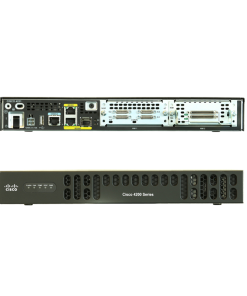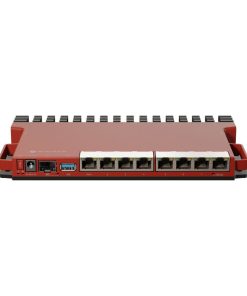Mô tả sản phẩm
Cisco C1111-4P là router phù hợp cho văn phòng Nhỏ/Văn phòng Tại nhà (SOHO) với các tính năng dành cho doanh nghiệp. Cisco C1111-4P là sự kết hợp của bộ định tuyến, bộ chuyển mạch vào một thiết bị nhỏ gọn, hoàn hảo cho một doanh nghiệp sử dụng VPN với yêu cầu hiệu suất cao nhưng chi phí hạn chế.
Dễ dàng quản lý với Cisco vManager
Cisco Manage là hệ thống quản lý Software-Defined WAN (SD-WAN) được cấu tạo bằng phần mềm (SD-WAN) trên Cisco C1111-4P cho phép bạn cấu hình và quản lý toàn bộ bộ định tuyến từ bảng điều khiển với đồ họa đơn giản.
Cisco DNA Center (Chế độ tự quản lý)
Đối với việc triển khai Cisco IOS XE truyền thống yêu cầu bộ quản lý tập trung để quản lý toàn bộ mạng, Cisco DNA Center đóng vai trò là một giải pháp hoàn hảo. Cisco DNA Center hỗ trợ quản lý thiết bị thông qua các mẫu Giao diện dòng lệnh (CLI), danh sách quản lý và quản lý hình ảnh phần mềm cho nền tảng định tuyến.
Giao diện người dùng web (WebUI)
WebUI có trên Cisco C1111-4P là một công cụ quản lý thiết bị dựa trên GUI cung cấp khả năng quản lý thiết bị, đơn giản hóa việc triển khai và quản lý thiết bị cũng như nâng cao trả nghiệm người dùng.
Không cần trả lên bất kỳ chi phí nào để sử dụng WebUI.
Bạn có thể xây dựng cấu hình, giám sát và khắc phục sự cố thiết bị mà không cần phải có kiến thức chuyên môn về CLI.
Bảo mật Cisco Umbrella
Cisco Umbrella cung cấp các chức năng bảo mật linh hoạt, được phân phối trên nền tảng đám mây thành một giải pháp, do đó bạn có thể mở rộng khả năng bảo vệ dữ liệu của mình tới các thiết bị, người dùng từ xa và các địa điểm được phân phối ở bất cứ đâu.
Umbrella là cách dễ nhất để bảo vệ hiệu quả người dùng của bạn ở mọi nơi trong vài phút.
Các chức năng bảo mật của Cisco Umbrella bao gồm bảo mật lớp DNS, cổng duyệt web an toàn, tường lửa, nhà cung cấp bảo mật truy cập đám mây, thông tin về mối đe dọa tương tác và tích hợp với Cisco SD-WAN.
Thông số kỹ thuật
| Mã sản phẩm | C1111-4P |
| Hệ điều hành | IOS Software |
| Cổng kết nối | |
| WAN interfaces | 1 ports Gigabit Ethernet (GE) |
| 2 x GE/SFP combo | |
| LAN interfaces | 4 x GE port |
| 2 port PoE | |
| 1 port PoE+ | |
| Bộ nhớ hệ thống | |
| DRAM | 8 GB |
| Flash Memory | – The 1000 Series ship with a fixed 4GB or 8GB flash memory depending on the models selected. |
| – Type A USB 3.0 ports provide capabilities for convenient storage. | |
| Hiệu năng | |
| ● Throughput | ● ISR 1000 can provide encrypted traffic performance greater than 350 Mbps. |
| ● Service reliability | ● A distributed multicore architecture with the dedicated control plane and service plane. |
| ● Mobility | ● Remote installation of application-aware services that run identically to their counter parts in dedicated appliances (Future roadmap). |
| ● Increased mobility and next-generation WAN and LAN options. Access Ethernet, DSL, LTE Advanced, 802.11ac and 802.11ax Wi-Fi. | |
| Hỗ trợ SD-WAN | |
| Better user experience | The ability to deploy applications in minutes, on any platform, with a consistent user experience. Deliver predictable performance for applications residing in the data center or in the cloud. |
| Greater agility | Faster, easier deployment and operation of your WAN, and get faster performance using less |
| bandwidth. Add new revenue generating services in minutes not months. | |
| Advanced threat protection | Securely connect your users to applications in minutes and protect your data from the WAN edge to the cloud. Secure segmentation for critical assets and multi-layer, robust security that encrypts all data. |
| Network management | |
| Cloud management user interface | vManage |
| Device staging and configuration | WebUI |
| Networkwide deployment, configuration, monitoring, and troubleshooting | Cisco Prime® Infrastructure |
| Context-aware security configuration and monitoring | Cisco Prime Security Manager |
| Embedded management | |
| Cisco IOS Embedded Event Manager | – A distributed and customized approach to event detection and recovery. |
| (EEM) | ● Offers the ability to monitor events and take informational, corrective, or any desired EEM. |
| ● Action when the monitored events occur or when a threshold is reached. | |
| Cisco IOS XE IP Service-Level | ● Helps assure the performance of new business-critical IP applications as well as IP |
| Agreements (IP SLAs) | services that use data and voice in an IP network. |
| Simple Network Management Protocol (SNMP), Remote Monitoring (RMON), syslog, NetFlow, IP Flow Information Export (IPFix) | ● Network monitoring and accounting tools. Enhanced 3G MIB with 4G MIB extension |
| LTE network management and | ● In-band and out-of-band management using Telnet (Cisco IOS XE Software Command |
| diagnostics | Line Interface [CLI]) and SNMP, including MIB II and other extensions. Industry-standard |
| LTE diagnostics and monitoring tools (Qualcomm CDMA Air Interface Tester [CAIT] and | |
| Spirent Universal Diagnostic Monitor [UDM]). | |
| Software features and protocols | |
| Protocols | IPv4, IPv6, static routes, Routing Information Protocol Versions 1 and 2 (RIP and RIPv2), Open |
| Shortest Path First (OSPF), Enhanced Interior Gateway Routing Protocol (EIGRP), Border Gateway | |
| Protocol (BGP), BGP Router Reflector, Intermediate System-to-Intermediate System (IS-IS), | |
| Multicast Internet Group Management Protocol Version 3 (IGMPv3), Protocol Independent | |
| Multicast Sparse Mode (PIM SM), PIM Source-Specific Multicast (SSM), Resource Reservation | |
| Protocol (RSVP), Cisco Discovery Protocol, Encapsulated Remote Switched Port Analyzer | |
| (ERSPAN), Cisco IOS IP Service-Level Agreements (IPSLA), Call Home, Cisco IOS Embedded | |
| Event Manager (EEM), Internet Key Exchange (IKE), Access Control Lists (ACL), Ethernet Virtual | |
| Connections (EVC), Dynamic Host Configuration Protocol (DHCP), Frame Relay (FR), DNS, | |
| Locator ID Separation Protocol (LISP), Hot Standby Router Protocol (HSRP), RADIUS, | |
| Authentication, Authorization, and Accounting (AAA), Application Visibility and Control (AVC), | |
| Distance Vector Multicast Routing Protocol (DVMRP), IPv4-to-IPv6 Multicast, Multiprotocol Label | |
| Switching (MPLS), Layer 2 and Layer 3 VPN, IPsec, Layer 2 Tunneling Protocol Version 3 | |
| (L2TPv3), Bidirectional Forwarding Detection (BFD), IEEE 802.1ag, and IEEE 802.3ah. | |
| Encapsulations | Generic Routing Encapsulation (GRE), Ethernet, 802.1q VLAN, Point-to-Point Protocol (PPP), |
| Multilink Point-to-Point Protocol (MLPPP), Frame Relay, Multilink Frame Relay (MLFR) (FR.15 and | |
| FR.16), High-Level Data Link Control (HDLC), Serial (RS-232, RS-449, X.21, V.35, and EIA-530), | |
| and PPP over Ethernet (PPPoE). | |
| Traffic management | Quality of Service (QoS), Class-Based Weighted Fair Queuing (CBWFQ), Weighted Random Early |
| Detection (WRED), Hierarchical QoS, Policy-Based Routing (PBR), Performance Routing (PfR), | |
| and Network-Based Application Recognition (NBAR). | |
| Cryptographic algorithms | Encryption: DES, 3DES, AES-128 or AES-256 (in CBC and GCM modes). |
| Authentication: RSA (748/1024/2048 bit), ECDSA (256/384 bit); Integrity: MD5, SHA, SHA-256, | |
| SHA-384, SHA-512. | |

